Q: What is this controversy I hear about Sphagnum and peat bogs?
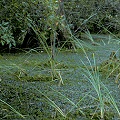
Sphagnum
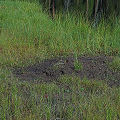
Sphagnum and peat
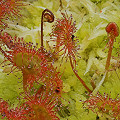
Drosera rotundifolia
on Sphagnum
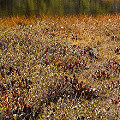
A Vermont
Sphagnum mat

Sarracenia purpurea
on Sphagnum
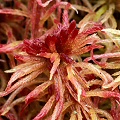
Sphagnum
A: There is a lot of worry about how Sphagnum is being harvested
for horticulture. I remember the time I opened a bale of Sphagnum and found a tiny, dead pitcher
plant dried up with the moss. It broke my heart. It is partly because of concern about unsustainable peat harvesting that some
growers are experimenting with other media, such as "coco peat" or fully inorganic media.
Kay Klier wrote an excellent review of the problem, which I include below.
Other mosses include Mnium, Bryum, Andraena, Funaria, and loads of others. These mosses occupy niches like tree bark, soil surface, some bogs and fens, just about any moist place. They do not have the barrel cells and are generally not as horticulturally valuable as Sphagnum. I've seen "sheet moss" sold to line hanging baskets and to top off potted plants (some people hate the looks of bare soil.)
Peat is partially decomposed organic material. If you examine peat, you can find bits and pieces of leaf and stem material, but it's basically pretty well composted. One of the commonly sold peats is Sphagnum peat, partially decomposed Sphagnum. But there are a lot of other peats, depending on starting material. Sphagnum peat will hold marginally more water than "plain peat".
Peat will burn. The "turves" they cut and burn in Ireland and other cold northern countries are slices of peat, lifted, dried, and used for fuel. Quite practical when it's too awful a climate for trees. Also useful when you've cut all the trees for wood, and now there's nothing else.
What is "peat moss"? Theoretically, it's Sphagnum, long strand, chopped or milled, but it could be just about anything. I've even seen partially decayed sedges sold as "peat moss" (yes, that sign came down after the manager and I had a little discussion...)
Long strand Sphagnum is just whole, dried Sphagnum plants. If you pick out one strand, it'll look about like coarse chenille. It won't soak up cold water readily (I usually put what I think I need in a bucket, then dump boiling water on it -- by the time the moss is cool enough to handle, it's fully saturated. Pick up a handful and let it drain. It holds an incredible amount of water. Squeeze it and you'll get more water out of the moss than you will out of a kitchen sponge. Great stuff. Very versatile, and alas, no substitutes seem to be anywhere near as good.
The habitat destruction associated with harvesting Sphagnum is worrisome. As several other people have noted, these are plants of the wetlands. The harvesting method is pretty crude, and you get everything that was in the Sphagnum. Sundews, butterworts, Empetrum, Sagina, you name it. When this sort of activity is carried on over wide areas, it is definitely destructive and non-sustainable. The bogs and fens of Britain are proof of this. And I've seen "peat harvesting" in Minnesota that made me cry.
Is it possible to harvest Sphagnum in a sustainable manner? Of course it is. Generally this involves taking narrow vertical slices of bog, leaving "ditches". The remaining plants will quickly fill back in, with minimal damage to the ecosystem. The area can be harvested again in several years (the exact time needed depends on the length of the growing season, among other things).
The Nature Conservancy in Britain (not the same as TNC in the US -- governmental, as opposed to our private group) has several fens and bogs that have been used for peat cutting over centuries. In most cases, this is a sustainable activity AS LONG AS only what can be replenished is removed. Wicken Fen is a pretty good case in point.
Sphagnum is wonderful stuff, and almost irreplaceable for some purposes. But biological diversity is also irreplaceable. So if you choose to use Sphagnum for horticultural purposes, use it wisely, and carefully, for purposes that only it can serve.
As I've said, I use Sphagnum. And I probably use more Sphagnum than most non-commercial gardeners who haven't been indoctrinated by old- time gardeners with commercial greenhouse training. But at the same time, that bale of Sphagnum I bought long ago will probably last me 12-25 years. It represents about a year's Sphagnum production on a 0.05 acre fen in Iowa (no, mine didn't come from Iowa, but I'm familiar with growth rates here, so that's how I think of it).
And make your thoughts and opinions known to companies that harvest Sphagnum commercially. And if you don't get answers you can live with, don't buy the products, and tell them why. After seeing that bog in Minnesota, there is a large horticultural firm whose entire line of products I boycott. It's otherwise a fairly sensible firm, with a good line of "organic gardening" products, and it sponsors some good garden programming. But they aren't going to get a penny from me until they straighten out.
Kay Klier, Biology Dept, UNI
Page citations: Personal observation; reader contribution.